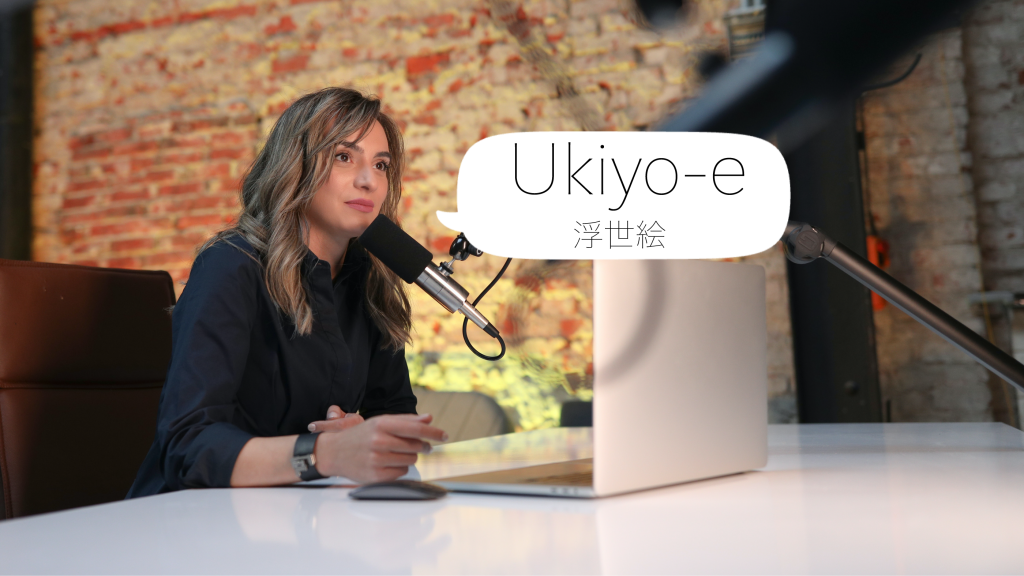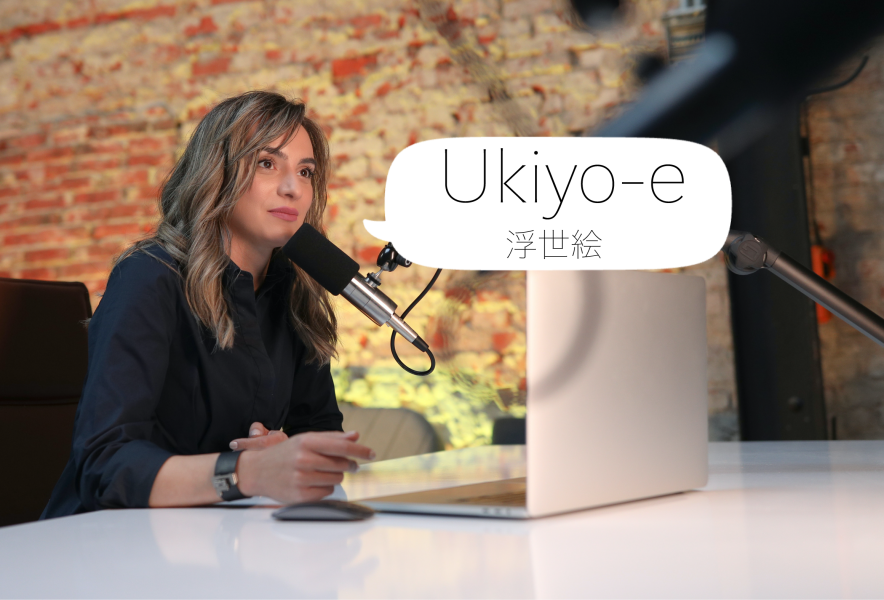Ukiyo-e was a popular form of entertainment for the common people in the Edo period. How exactly is this word ‘Ukiyo-e’ pronunciation? A Japanese person actually pronounced it, so if you are curious, please refer to this page.
Let’s try to pronounce!
Whereas in Japanese it is written ‘浮世絵’, in English it is written ‘Ukiyo-e’.
So how is it pronounced in Japanese? A Japanese person actually pronounced it, so if you’re curious, try pronouncing it together.

What is Ukiyo-e?
Picture of a buoyant world
Ukiyo-e is a woodblock print in which a craftsman carves a design on a wooden board to create a woodblock, which is then overprinted with colours on Japanese paper to complete the print. It has been a traditional style since the Edo period and is a popular print depicting all the fashionable things of the Edo period.
Ukiyo-e, as the word implies, depicts a buoyant world, hence the name ‘ukiyo’ ‘picture’. The warring states period up to that time had been a time of ‘melancholy’, which was written as ‘melancholy world’, but in the Edo period, with the end of warfare, the hearts of the common people became more cheerful, and this was reflected in their lives and culture.
Influenced Impressionist painters
Ukiyo-e was enjoyed by the general public. The genres varied from ‘yakusha-e’ (portrayals of actors) depicting popular Kabuki actors, ‘landscapes’ depicting scenes from various regions, and ‘bijinga’ (portrayals of beautiful women) depicting yu-jyo and geisha in the Yoshiwara, which were mass-produced in print form and reasonably priced.
Ukiyo-e crossed the seas after the end of the Edo period and fascinated Westerners with their bold compositions and vivid colours. Ukiyo-e used in packing materials imported from Japan quickly became popular and were traded at prices unthinkable in Japan at the time. They influenced impressionist painters such as Monet and Gauguin, leading to an unprecedented Japonism boom.
See also Why Ukiyo-e is said it was a “Media”? How did people in Edo enjoy them?
Main image is from https://unsplash.com/

